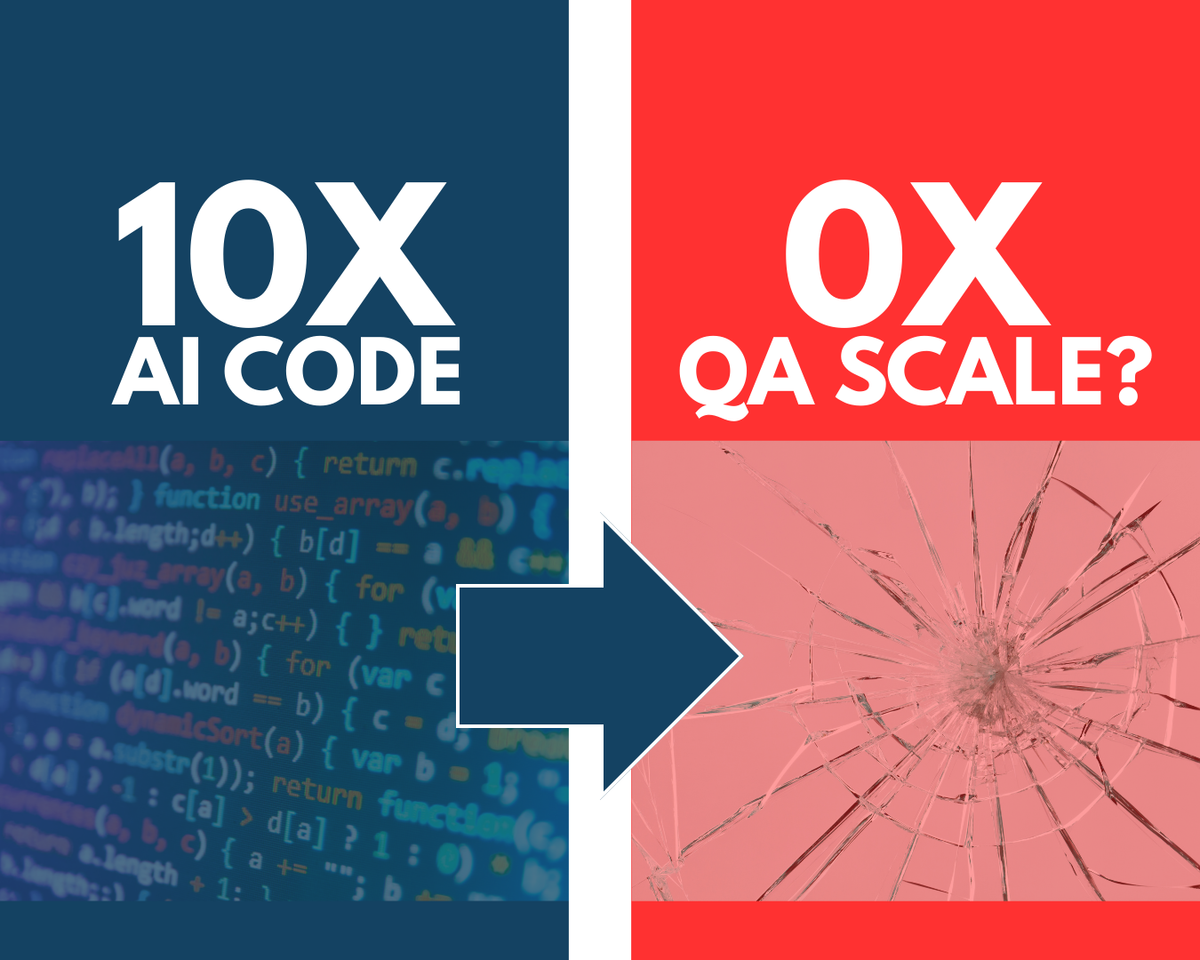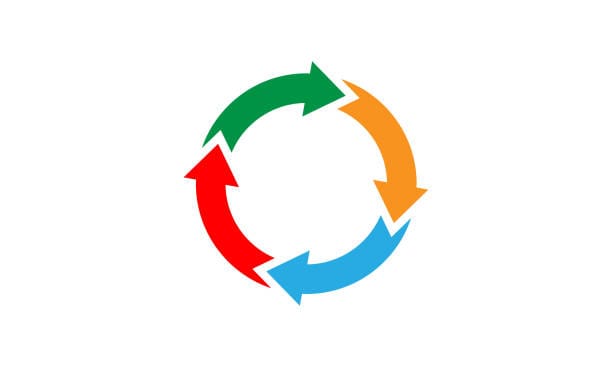The Hidden Bottleneck of AI-Generated Code: Why QA Will Make or Break Your Velocity

“While most focus on shipping more code, we’re leaving stealth to address the growing QA bottleneck caused by an increase in AI-generated code.”
That line captures one of the most overlooked truths about the current AI boom: the bottleneck isn’t just engineering capacity anymore. It’s QA.
AI is accelerating code output at a pace no human team could sustain. That’s a blessing on one side; and a ticking time bomb on the other.
Because for every 10x increase in lines of code, features, or microservices… QA has not scaled in parallel.
And when QA doesn’t scale, velocity turns into fragility.
The Myth of Infinite Velocity
Let’s start with the hype.
Right now, engineering leaders are celebrating AI copilots and code generators that can churn out new modules, endpoints, or features in hours.
It feels like velocity is infinite.
But velocity without validation isn’t speed. It’s just acceleration toward the edge of a cliff.
Here’s the uncomfortable truth:
- A build that compiles doesn’t mean the product is safe.
- Passing a handful of unit tests doesn’t mean the customer journey works.
- “Ship more” doesn’t equal “ship better.”
When AI increases the supply of code but QA remains the same, you’ve just traded one bottleneck (developer hours) for another (quality assurance).
Where the QA Bottleneck Appears
It doesn’t take long for the cracks to show. Here’s where most teams start to feel the pain:
- Manual testing can’t keep pace: Even the most efficient manual QA team can’t validate dozens of AI-generated pull requests per week. Coverage becomes shallow and release confidence collapses.
- Automation coverage is brittle or missing: AI doesn’t magically create maintainable tests. And in most orgs, test automation lags far behind feature velocity. The result? Broken pipelines, skipped tests, or false positives that devs ignore.
- Risk gets disguised as speed: Engineering velocity looks great in Jira dashboards. But hidden underneath is quality debt; regressions, usability gaps, compliance misses. That debt compounds until it hits production.
- Trust erodes: Executives stop believing test results. Engineers stop trusting pipelines. Customers stop trusting the product. The bottleneck has officially become a business problem.
Why This Problem Is Systemic, Not Tactical
Many teams try to solve this bottleneck tactically:
- Add more manual testers.
- Write a few “quick” automation scripts.
- Extend regression testing timelines.
But that misses the point.
The bottleneck isn’t caused by individual testers or tools. It’s caused by a mismatch between the scale of AI code generation and the maturity of QA processes.
In other words: AI is scaling development to industrial speed, while QA is still operating like an artisanal workshop.
That gap widens every sprint.
The Undiscussed Pain: The Hidden Tax of Unvalidated Code
Here’s what almost nobody admits in board meetings or all-hands updates:
The cost of not addressing this bottleneck is massive.
- Production outages multiply: What used to be a once-a-quarter incident becomes weekly firefighting.
- Customer churn accelerates: Bugs aren’t just annoyances; they drive users straight to competitors.
- Team morale tanks: Developers stop believing their work is stable. QA teams burn out trying to play catch-up.
- Valuations suffer: Investors don’t reward “we ship fast.” They reward “we ship reliably.” When reliability erodes, so does trust; and so does valuation.
This is the hidden tax of shipping faster than you can validate. It doesn’t show up on sprint boards. But it shows up in lost deals, angry customers, and late-night firefights.
The Future of QA Must Match the Future of Dev
So what does it look like to actually fix this bottleneck?
It doesn’t mean slowing AI down. It means bringing QA up to speed.
That requires a new set of practices and technologies designed for the AI era:
1. Agentic Testing
Instead of writing endless manual test cases, leverage agents that can generate, adapt, and execute tests based on requirements or even live UI states. Agents aren’t just “test writers.” They become continuous validators.
2. Self-Healing Pipelines
Traditional CI/CD crumbles under flaky tests and brittle scripts. Self-healing pipelines detect when failures are test-related vs product-related, and automatically fix or re-route without blocking the team.
3. Intelligent Coverage Metrics
Forget chasing 100% test coverage; it’s a false summit. Instead, measure coverage in terms of risk reduction. AI can help identify untested business flows, compliance-critical areas, and high-impact regressions.
4. Integrated Traceability
AI-generated code needs AI-powered test mapping. That means requirements, stories, test cases, and automation must stay in sync. Otherwise, you’re validating the wrong thing while new code ships unverified.
What Happens If You Don’t
The temptation is to think: “We’ll figure QA out later.”
But here’s the reality: later never comes.
The more AI accelerates development, the more unvalidated risk piles up. And once quality debt compounds past a certain point, recovery is brutal.
I’ve seen companies hit this wall. Their developers were shipping more features than ever, but customer trust was at an all-time low. Engineering speed became irrelevant because the product had become unreliable.
The lesson is simple: AI won’t save you if QA can’t keep up.
What Happens If You Do
On the other hand, the companies that invest in scaling QA alongside AI unlock something powerful:
- Velocity with confidence: You’re not just shipping fast; you’re shipping reliably.
- Resilient pipelines: Failures trigger fixes, not firefights.
- Happier teams: Engineers focus on building, not debugging endless regressions. QA becomes a strategic partner, not a bottleneck.
- Market advantage: Reliability becomes your moat. When competitors burn customers with broken AI-shipped features, you’re the team that delivers trust.
The Call to Leaders
If you’re scaling your engineering org with AI, you must scale your QA org just as aggressively.
AI-generated code is not the end of QA. It’s the beginning of QA’s most critical chapter.
Because in this new era, velocity is meaningless without validation.
The winners won’t just be the teams that ship the most code. They’ll be the teams that ship code customers can trust.
Closing it Out
That CTO’s words keep echoing for me:
“While most focus on shipping more code, we’re leaving stealth to address the growing QA bottleneck caused by AI-generated code.”
The stealth they’re talking about? It’s not about hiding.
It’s about preparing.
The companies that quietly solve the QA bottleneck today will dominate tomorrow.
Because AI isn’t really about writing more code.
It’s about delivering more value.
And value only comes when quality keeps pace.
👉 Want more posts like this? Subscribe and get the next one straight to your inbox. Subscribe to the Blog or Follow me on LinkedIn



Comments ()